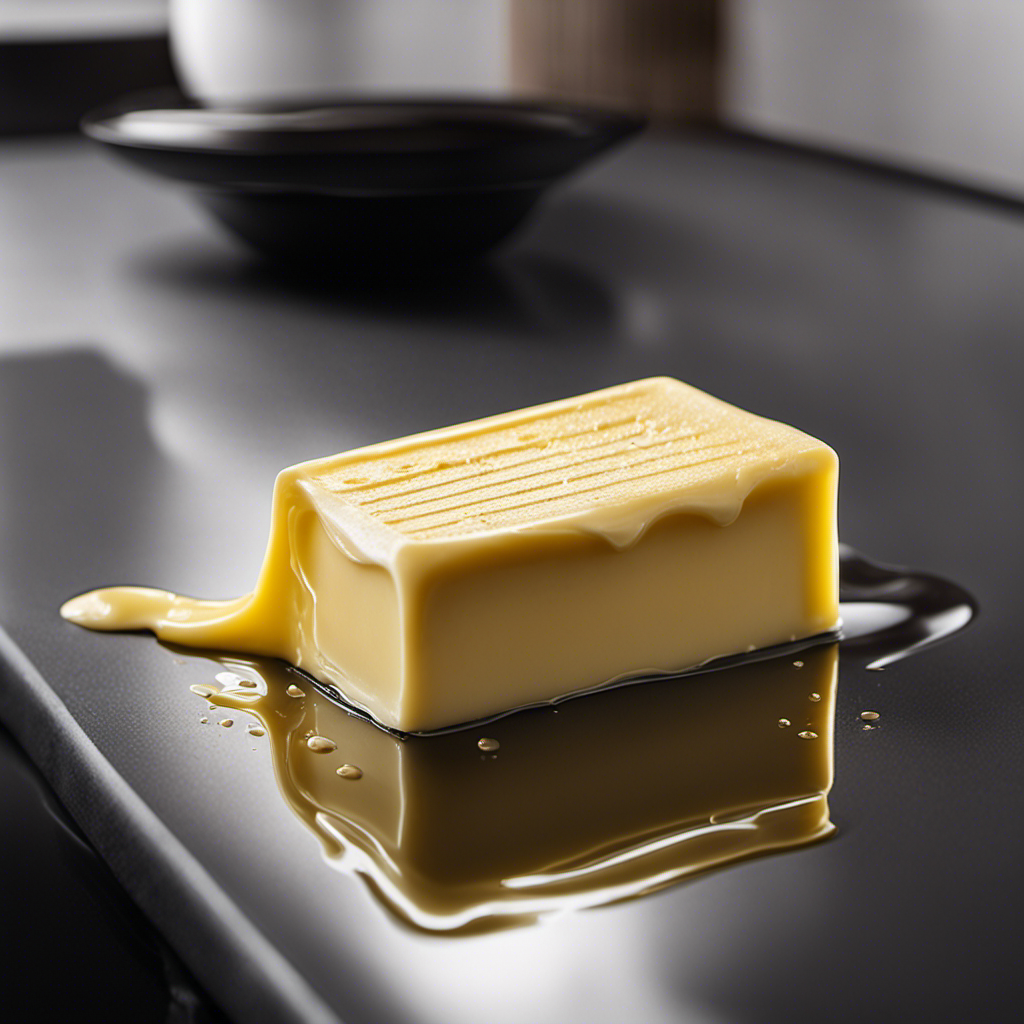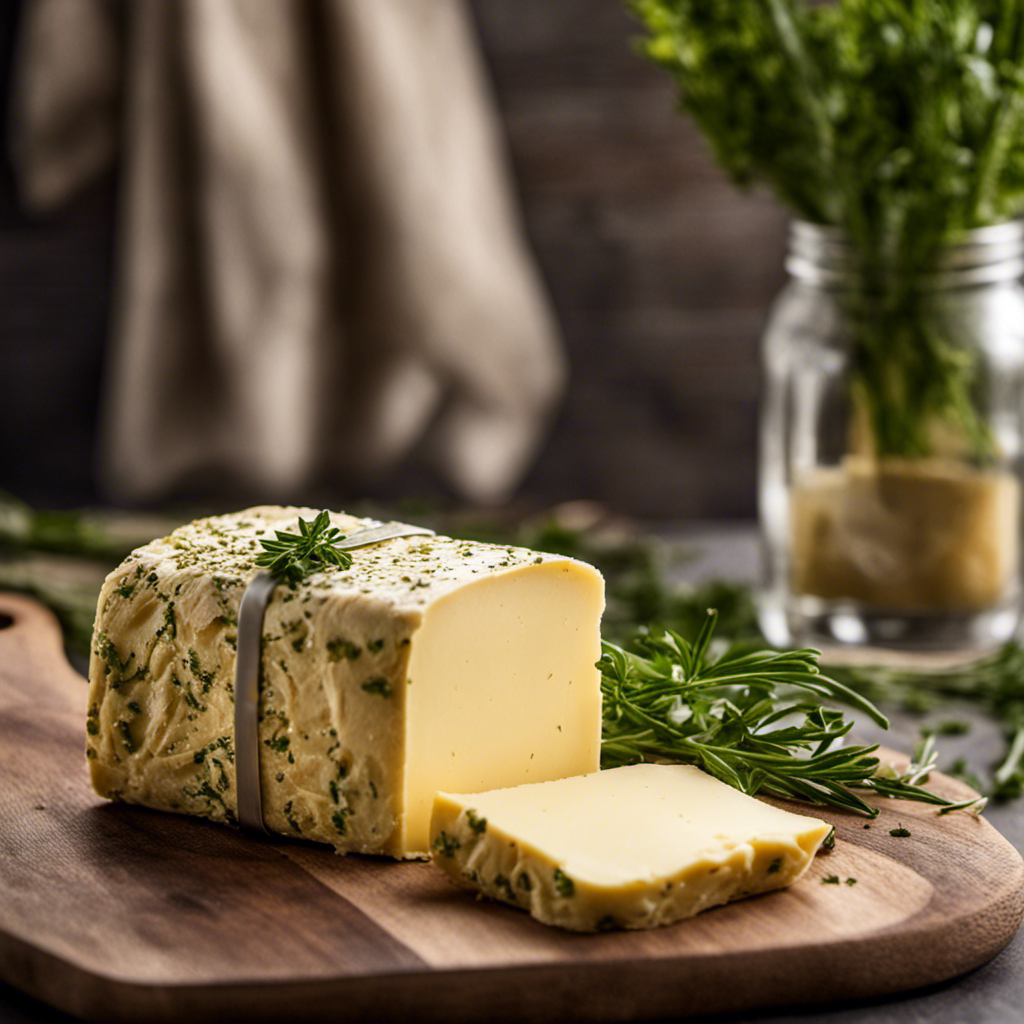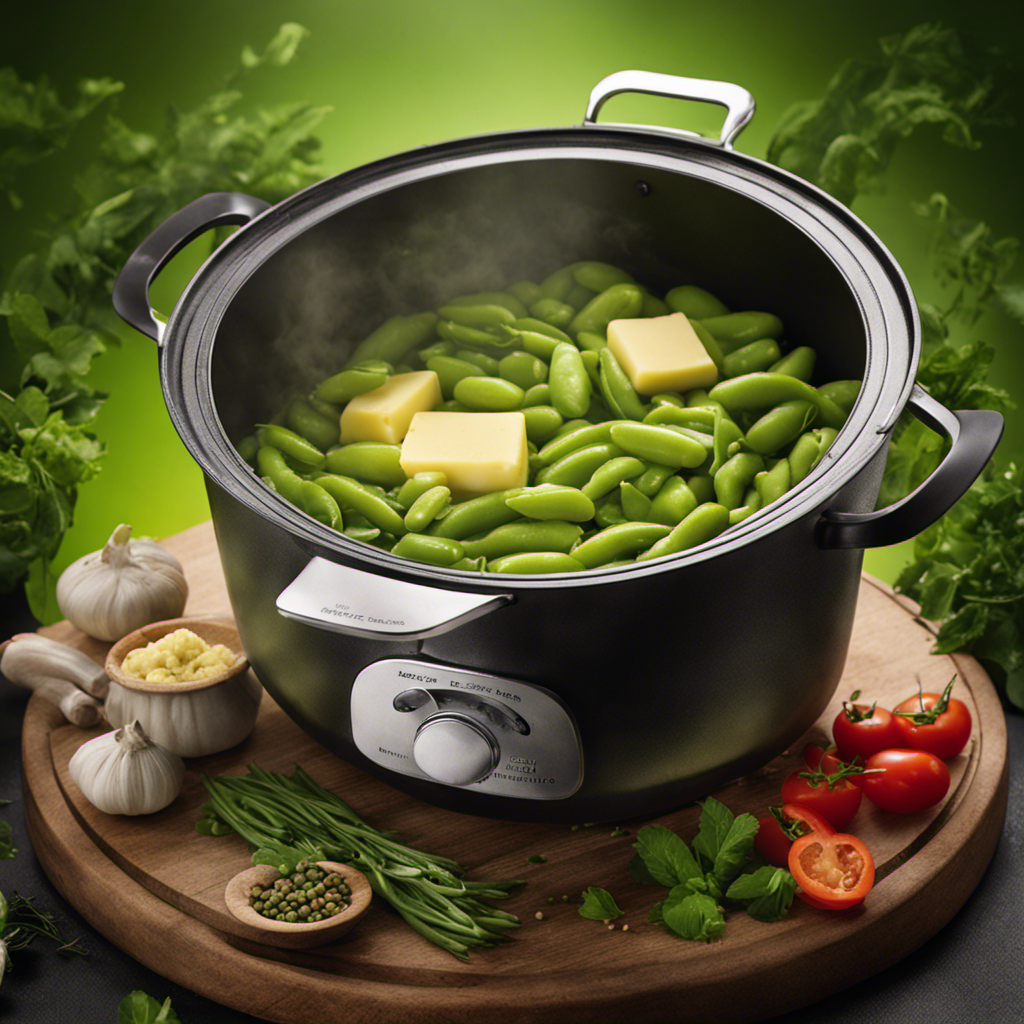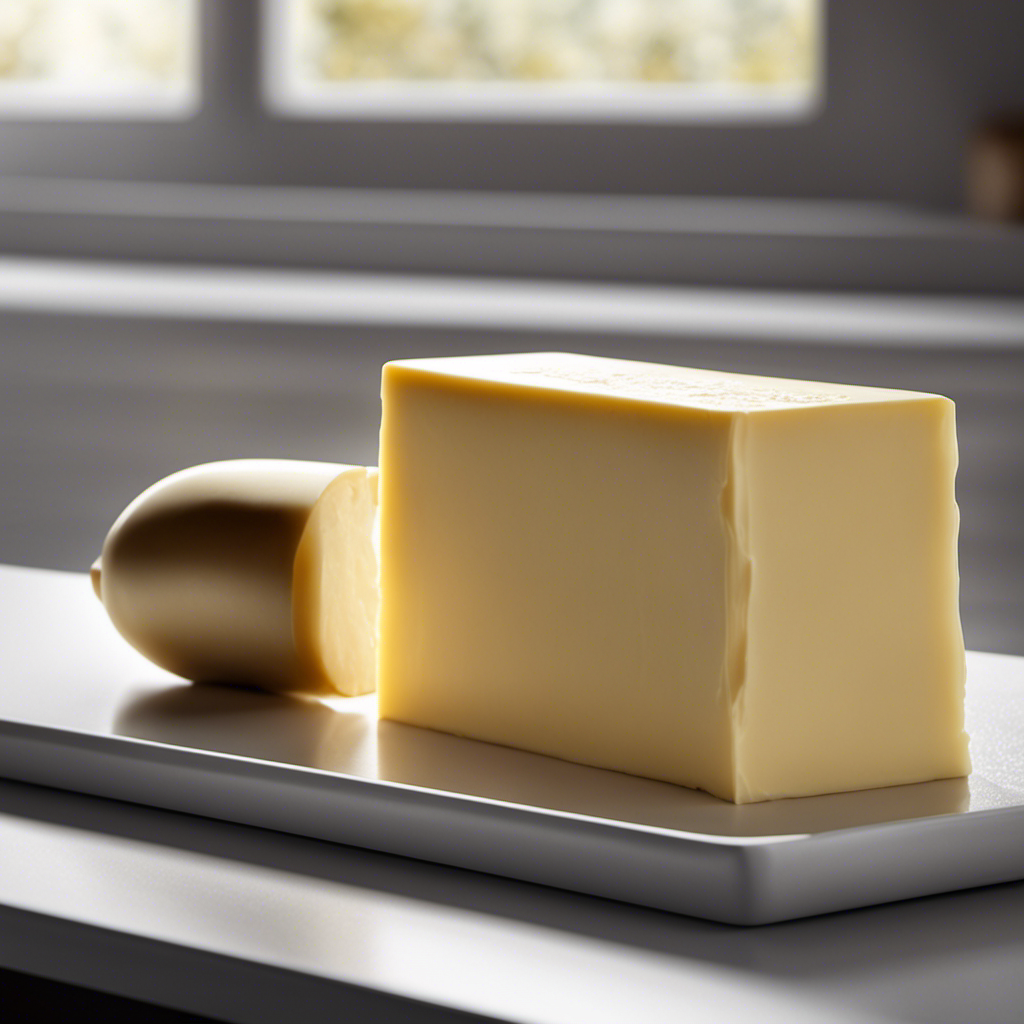Have you ever wondered if stick butter can still be safe to use even after the expiration date? Surprisingly, there are ways to ensure its shelf life and ways to make it last longer. Learn all about it!
Understanding butter expiration dates and knowing how to properly store it are essential in ensuring its quality. In this article, I will discuss the signs of spoiled stick butter, as well as safety precautions when using expired butter.
So, let’s dive in and learn how to make the most of your stick butter!
Key Takeaways
- Stick butter can still be safe to use after its expiration date.
- Factors such as temperature, packaging, moisture, and light can affect the shelf life of butter.
- Proper storage methods, such as keeping butter in an airtight container or wrapping it tightly, can help extend its freshness.
- Signs of spoiled butter include off-putting odor, discolored appearance, mold growth, and unusual texture.
Understanding Butter Expiration Dates
Butter is still safe to consume for a short period of time after its expiration date. The expiration date on a stick of butter indicates the recommended time by which it should be used for best quality. However, the actual shelf life of butter extends beyond this date.
When stored properly, butter can remain safe to eat for several weeks after the expiration date. To maximize its shelf life, it is important to store butter in a cool and dry place, away from direct sunlight and heat sources. Additionally, using a covered butter dish or wrapping the butter tightly in foil or plastic wrap can help prevent it from absorbing odors and flavors from other foods in the fridge.
Following these storage methods can help ensure that your butter remains safe and tasty for an extended period of time.
Factors Affecting Butter Shelf Life
To maximize shelf life, there are several factors to consider when storing your stick of butter beyond its expiration date. Here are some key considerations:
-
Temperature: It’s important to keep your butter in a cool environment, ideally below 50°F (10°C). This helps slow down the growth of bacteria and maintain its freshness.
-
Packaging: To prevent your butter from absorbing odors from other foods in the refrigerator, store it in an airtight container or wrap it tightly in foil or wax paper.
-
Moisture: Excessive moisture can lead to spoilage, so make sure the butter is not exposed to high humidity levels.
-
Light: Butter is sensitive to light, which can cause it to oxidize and develop an off-flavor. To avoid this, store it in a dark place or wrap it in opaque material.
By following these butter storage methods and preservation techniques, you can ensure that your stick of butter stays fresh and delicious for longer.
Now, let’s delve into how to properly store stick butter.
How to Properly Store Stick Butter
When properly stored, your stick of butter can stay fresh and delicious beyond its expiration date. To ensure the best practices for storing butter in the fridge, it is essential to keep it in an airtight container or wrap it tightly in aluminum foil or wax paper. This prevents the butter from picking up other odors and flavors in the fridge.
It’s also crucial to store butter away from foods with strong smells, such as onions or garlic, as butter easily absorbs these odors. Additionally, maintaining a consistent temperature in the fridge, ideally between 32-40°F (0-4°C), is key to preventing butter from going bad quickly.
Signs of Spoiled Stick Butter
If your stick of butter has developed a rancid smell or a sour taste, it may have gone bad. Spoiled butter can be a health hazard and should be discarded immediately. Here are some signs of spoilage to look out for:
- Off-putting odor: spoiled butter may have a pungent, rotten smell.
- Discolored appearance: the butter may have darkened or turned yellowish.
- Mold growth: visible growth of mold is a clear indication of spoilage.
- Unusual texture: spoiled butter may become slimy or greasy.
It is important to note that when butter goes bad, it is best to err on the side of caution and throw it away. Consuming spoiled butter can lead to foodborne illnesses.
To prevent spoilage, store butter properly in a cool, dry place and check the expiration date before use.
Extending the Life of Expired Stick Butter
One way you can prolong the shelf life of expired stick butter is by freezing it. Freezing butter is a simple and effective method for extending its freshness and preserving its quality. When butter reaches its expiration date, it doesn’t necessarily mean it has gone bad. By freezing it, you can prevent it from spoiling and ensure that it remains usable for a longer period of time.
To properly freeze stick butter, follow these steps:
- Cut the butter into smaller portions or leave it in stick form.
- Wrap each portion tightly in plastic wrap or place it in an airtight container.
- Label the packaging with the date of freezing.
When you’re ready to use the frozen butter, simply thaw it in the refrigerator overnight. The butter will retain its flavor and texture, making it suitable for a variety of culinary uses.
Using Stick Butter Past the Expiration Date
To make the most of stick butter that has expired, you should consider freezing it to preserve its quality and extend its usability. Freezing butter can prevent it from going rancid and ensure that it remains safe for consumption.
Here are some tips for using expired butter for cooking:
- Soften the frozen butter before use by leaving it at room temperature for a few minutes.
- Use expired butter in recipes that require melting or baking, as the heat will kill any potential bacteria.
- Experiment with expired butter in dishes that have strong flavors, as this can help mask any off-taste that may have developed.
- Keep in mind that the texture of expired butter may be different, so it may not be suitable for spreading on bread or toast.
By following these tips, you can make the most of your expired stick butter and still enjoy its rich flavor in your favorite recipes.
However, it is important to take certain safety precautions when using expired butter.
Safety Precautions When Using Expired Stick Butter
As someone who values their health and safety, it is crucial to understand the potential risks associated with consuming expired butter.
Expired butter can harbor harmful bacteria, such as Salmonella and E. coli, which can lead to foodborne illnesses.
To prevent the growth of these bacteria, it is essential to store butter properly in the refrigerator, away from other perishable foods.
Lastly, if you find yourself with expired butter that is no longer safe for consumption, there are alternative uses for it, such as using it as a moisturizer for dry skin or as a lubricant for squeaky hinges.
Health Risks of Expired Butter
You should be aware of the potential health risks when consuming expired butter. Consuming expired butter can have several negative health consequences, including increased risk of foodborne illnesses. Bacteria such as Salmonella and E. coli can grow in expired butter, leading to food poisoning and gastrointestinal issues.
Another health risk is decreased nutritional value. Over time, the vitamins and minerals in butter degrade, reducing its nutritional value. Expired butter may not provide the same health benefits as fresh butter.
Additionally, butter can become rancid as it ages. This is due to the oxidation of its fat content. Rancid butter can cause digestive discomfort and may contribute to the development of chronic diseases.
Lastly, expired butter may contain higher levels of histamines, which can trigger allergic reactions in individuals with dairy allergies.
To avoid these health risks, it is important to check the expiration date on butter packaging and discard any expired products.
Proper Storage Methods
Storing butter in the refrigerator helps to maintain its freshness and prevent spoilage. The optimal butter storage temperature is between 32 and 40 degrees Fahrenheit. At this temperature range, butter can stay fresh for up to several weeks past its expiration date.
However, it is important to use proper butter storage containers to enhance its shelf life. These containers should be airtight to prevent the absorption of odors from other foods in the refrigerator.
Additionally, butter can also be stored in the freezer for longer-term storage, where it can last for several months.
Now that we know how to store butter properly, let’s explore some alternative uses for expired butter.
Alternative Uses for Expired Butter
If you have expired butter, one option is to use it as a moisturizing ingredient in homemade body scrubs. Butter contains natural fats that can hydrate and nourish the skin, leaving it feeling soft and smooth.
Here are some creative recipes for DIY body scrubs using expired butter:
-
Brown Sugar and Butter Scrub: Mix equal parts brown sugar and melted butter to create a scrub that exfoliates and moisturizes the skin.
-
Coffee Grounds and Butter Scrub: Combine used coffee grounds with softened butter for a scrub that can help improve circulation and reduce the appearance of cellulite.
-
Oatmeal and Butter Scrub: Blend oats and melted butter to create a gentle exfoliating scrub that soothes dry and itchy skin.
-
Sea Salt and Butter Scrub: Mix sea salt with softened butter to create a revitalizing scrub that removes dead skin cells and promotes a healthy glow.
These cooking substitutes can be repurposed to create luxurious body scrubs that will leave your skin feeling pampered and rejuvenated.
Frequently Asked Questions
Can I Freeze Stick Butter to Extend Its Shelf Life?
Yes, you can freeze stick butter to extend its shelf life. Freezing butter slows down the growth of bacteria and preserves its quality. Alternatively, you can store it in the fridge for a shorter period.
What Are Some Common Signs of Spoiled Stick Butter?
Spoiled stick butter shows signs like off smell, mold, or a rancid taste. Proper storage can extend its shelf life. Keep it tightly wrapped in the fridge and use within a few weeks.
Is It Safe to Consume Stick Butter Past Its Expiration Date?
I’m not sure how long stick butter is good for after the expiration date, but there are alternative options for those with lactose intolerance or dairy allergies. Additionally, the environmental impact of butter production and consumption should be considered.
How Long Does Stick Butter Typically Last in the Refrigerator?
Stick butter typically lasts in the refrigerator for about three to four weeks. It’s important to store it properly, in an airtight container, to maintain its freshness. Following these storage tips will maximize its shelf life.
Can I Use Expired Stick Butter in Baking or Cooking Recipes?
Expired stick butter can be used in baking or cooking recipes, but it may affect the taste and texture of the final dish. To avoid using expired butter, store stick butter properly in the refrigerator to maximize its shelf life.
Conclusion
In conclusion, while it may be tempting to use stick butter past its expiration date, it is important to prioritize safety.
Although some sources suggest that expired butter can still be used if stored properly, it is crucial to consider the potential risks of consuming spoiled food.
The juxtaposition of the desire to save money and the potential consequences of foodborne illness should remind us of the importance of following expiration dates and practicing proper food storage.
Let’s prioritize our health and make informed choices when it comes to our food.










